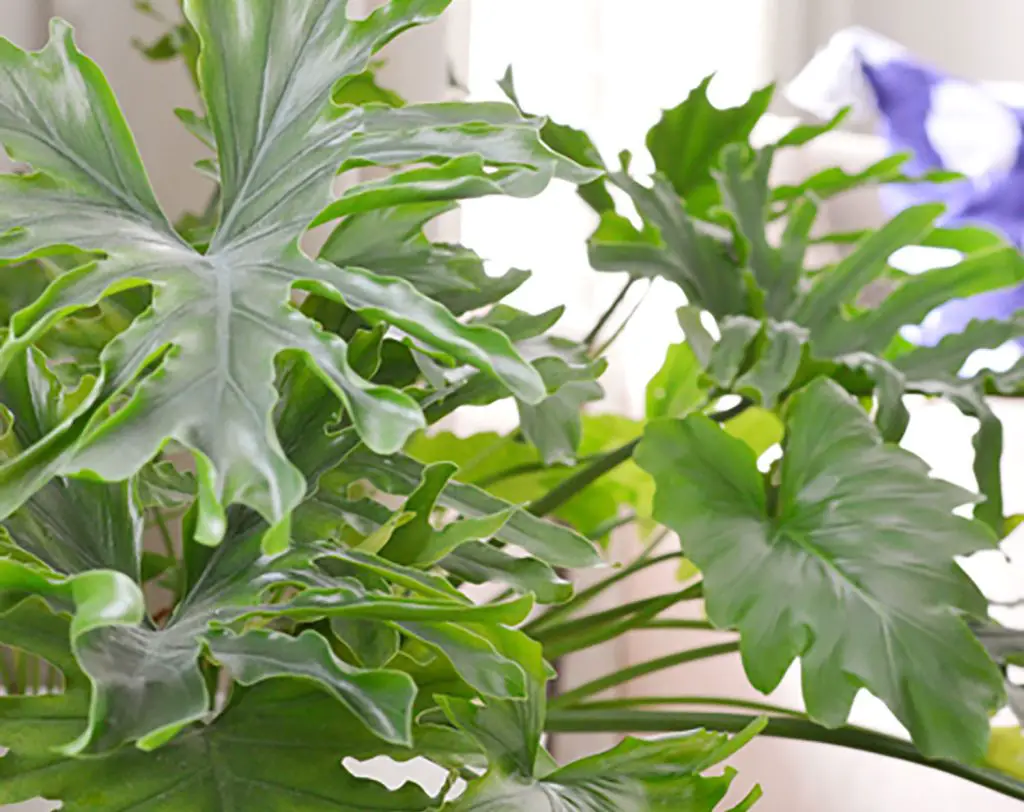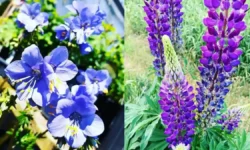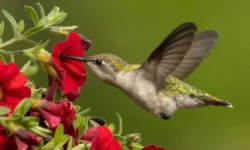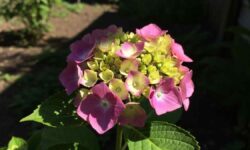The Split Leaf Philodendron, also known as Monstera deliciosa or Swiss Cheese Plant, is a favorite among houseplant enthusiasts for its dramatic, fenestrated leaves and tropical charm. For many plant lovers, propagation is not only an economical way to expand their collection but also a rewarding process that brings joy when new roots and leaves appear. With the right technique, you can successfully propagate a Split Leaf Philodendron at home and grow healthy new plants that thrive just like the parent.
This detailed guide explains everything you need to know about propagation, including when to take cuttings, how to prepare them, and how to provide the best growing conditions. Whether you’re new to gardening or already an experienced plant enthusiast, you’ll find valuable tips to ensure success.
Table of Contents
Understanding Split Leaf Philodendron Propagation

The Split Leaf Philodendron naturally produces aerial roots along its stems, which help it cling to trees in its native tropical rainforest. These aerial roots also make it easier to propagate because they quickly adapt to water or soil, forming strong root systems when given the proper care.
Propagation essentially involves taking a cutting from a healthy, mature plant and encouraging it to develop roots, eventually becoming an independent plant. Unlike seeds, which can take months to germinate and may produce slightly different characteristics, cuttings are clones of the parent, guaranteeing the same striking leaf shapes and growth patterns.
The best results occur when you propagate during the plant’s active growing season, usually in spring or summer. During this period, the plant has more energy for root and leaf production, which speeds up the entire process.
Choosing the Right Time to Propagate
Timing has a major impact on propagation success. The best time to propagate your Split Leaf Philodendron is late spring through early summer when temperatures are warm and daylight is abundant. The plant’s natural growth cycle is at its peak, which helps cuttings root faster and recover more easily.
Avoid propagating during autumn or winter when the plant’s growth slows. During these months, root development is sluggish, and the cutting might struggle to establish itself. If you live in a region with stable indoor temperatures and artificial lighting, propagation can still be done year-round, but you’ll need to provide warmth and humidity to replicate growing season conditions.
Preparing the Parent Plant
A healthy parent plant ensures a healthy cutting. Always select a mature Split Leaf Philodendron that shows no signs of pests, diseases, or nutritional deficiencies. The ideal stem should have vibrant green leaves, firm tissue, and visible nodes or aerial roots.
Water your plant one or two days before taking cuttings. Well-hydrated stems will recover better after pruning and provide more stored energy to the cutting during its initial rooting phase. Check the plant carefully, removing any damaged or yellowing leaves before starting, so you only work with the healthiest sections.
Selecting and Cutting the Stem
Choosing the right stem is crucial for success. A good cutting should be four to six inches long, with at least one visible node—the point on the stem where leaves and aerial roots emerge. Without a node, roots will not grow, no matter how much care you provide.
Use sharp, sterilized pruning shears or a clean knife to make the cut just below the node. Make sure the cutting includes one or two healthy leaves and, ideally, an aerial root, which speeds up root development.
After cutting, inspect the wound on the parent plant. Dusting a little cinnamon powder or applying a mild fungicide can help prevent infections and encourage faster healing.
Preparing the Cutting for Propagation
Once you have your cutting, allow it to rest for a few hours before placing it in water or soil. This resting period lets the cut end callus over, reducing the risk of rot, especially if you’re propagating in soil. Keep the cutting in a clean, dry area away from direct sunlight while it dries.
You can dip the cut end in rooting hormone powder or gel before planting. While Split Leaf Philodendrons root easily without it, rooting hormone can stimulate faster and stronger root growth, making the entire process more reliable.
Propagating in Water
Water propagation is popular because it allows you to observe root growth. Place the cutting in a clean glass or jar filled with room-temperature filtered or distilled water. Make sure the node is submerged, but keep the leaves above the water to prevent rotting.
Position the container in a bright location with indirect sunlight. Direct sunlight can encourage algae growth and overheat the water, which stresses the cutting. Change the water every three to five days to keep it clean and oxygen-rich.
Within two to four weeks, small white roots should appear from the node. Once the roots reach two to three inches in length, the cutting can be transferred to soil. While some people keep their plants in water permanently, the Split Leaf Philodendron grows stronger and produces larger leaves when grown in soil.
Propagating in Soil
Soil propagation is an excellent method for those who want to avoid transplant shock later. Choose a well-draining potting mix formulated for aroids, ideally containing peat moss, perlite, and orchid bark. This combination keeps the soil airy while retaining enough moisture for new roots.
Plant the cutting so the node is just below the soil surface, keeping the leaves above the soil. Water the soil until it is evenly moist, but do not soak it, as excessive moisture can cause rot.
To improve humidity, you can cover the pot with a clear plastic bag to create a greenhouse effect. Ensure the plastic doesn’t touch the leaves and open it every few days for ventilation. In about four to six weeks, gently tug the cutting; if you feel resistance, new roots have formed.
Caring for New Cuttings
The early stages of growth are crucial for your new plant’s success. Keep the soil slightly moist but never soggy. Overwatering can suffocate new roots and cause fungal infections. If you’re propagating in water, transfer the cutting to soil as soon as the roots are strong enough to handle the change.
Place the cutting in a bright spot with indirect sunlight, avoiding harsh rays that can scorch its tender leaves. Maintaining humidity levels around 60% or higher will help the cutting adjust quickly. Misting the leaves or using a humidifier can be beneficial.
Avoid fertilizing during the first month, as the cutting needs time to focus on root development. Once you see new leaves, begin feeding with a diluted balanced liquid fertilizer every four to six weeks to encourage healthy growth.
Common Problems During Propagation
Even with careful attention, problems can occur. The most common issue is stem or root rot caused by excessive moisture. Always ensure proper drainage and never leave the cutting in stagnant water or overly wet soil.
Slow or no root development may occur if you propagate during cooler months or keep the cutting in low light. Increasing warmth with a heat mat and providing brighter indirect light often helps.
Yellowing leaves on your cutting may indicate overwatering, insufficient light, or transplant shock. Remove any damaged leaves, adjust the care routine, and be patient as the cutting adapts to its new environment.
Transplanting the Propagated Plant
Once your cutting has developed strong roots, transplant it into a permanent pot. Choose a pot with drainage holes and fill it with a well-draining, nutrient-rich potting mix. Handle the cutting carefully to avoid damaging delicate new roots.
After planting, water thoroughly to help the soil settle around the roots. Keep the plant in bright indirect light and avoid moving it too frequently during the first few weeks. With proper care, new leaves will soon emerge, marking the beginning of its independent growth.
Long-Term Care for Your New Plant
Once established, care for your propagated Split Leaf Philodendron just like a mature plant. Provide bright, indirect sunlight, water when the top inch of soil feels dry, and maintain moderate to high humidity for lush foliage.
As the plant grows larger, consider adding a moss pole or trellis. Supporting its natural climbing habit encourages bigger leaves with more pronounced splits. Regular feeding during the growing season with a balanced fertilizer will also keep the plant healthy and vibrant.
With patience and consistent care, your propagated Split Leaf Philodendron will flourish for years, adding tropical beauty to your indoor space. Propagating not only saves money but also allows you to share this stunning plant with friends and family.
FAQs about How to Propagate Split Leaf Philodendron
How long does it take for Split Leaf Philodendron cuttings to root?
Split Leaf Philodendron cuttings usually take two to six weeks to develop roots, depending on growing conditions. Warm temperatures, high humidity, and bright indirect light can speed up root formation.
Can you propagate Split Leaf Philodendron in just water?
Yes, you can propagate in water, and many people prefer it because they can monitor root growth easily. However, for long-term health, transferring to soil once roots are two to three inches long is recommended.
What is the best season to propagate Split Leaf Philodendron?
The ideal time to propagate is in spring or early summer when the plant is actively growing. This period ensures faster rooting and better chances of success.
Why are my Split Leaf Philodendron cuttings turning yellow?
Yellowing often indicates overwatering, poor light, or transplant shock. Adjust watering, move the cutting to a brighter spot, and remove any damaged leaves to encourage recovery.
Do you need rooting hormone to propagate Split Leaf Philodendron?
Rooting hormone is not strictly necessary, as this plant roots easily on its own. However, using it can promote faster and stronger root development, especially in soil propagation.






